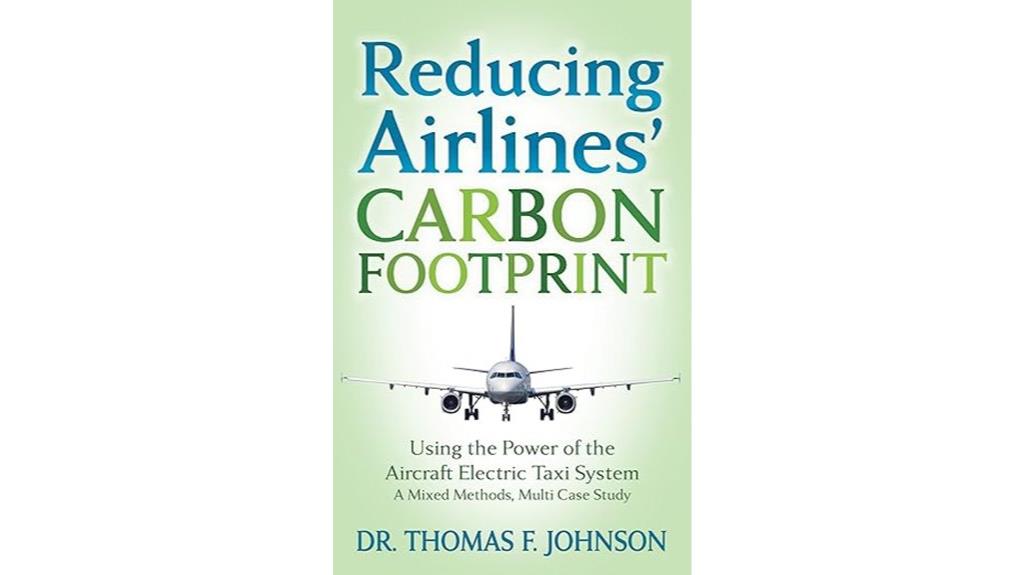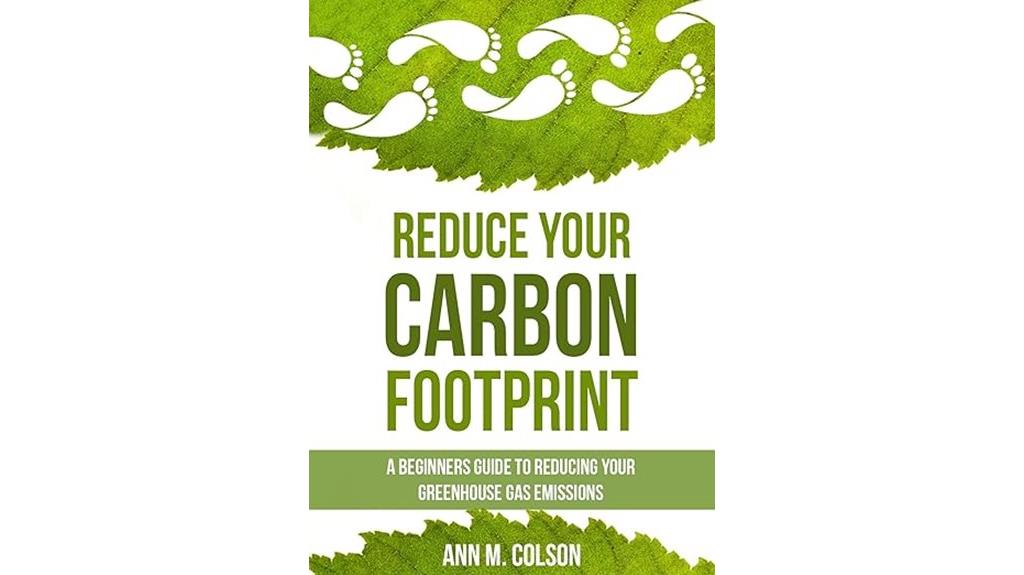To reduce your carbon footprint, I recommend focusing on three effective strategies: first, support the implementation of an Electric Taxi System in airports to cut emissions during taxiing. Next, adopt energy-efficient practices at home, like using smart appliances and renewable energy sources. Finally, engage in community sustainability initiatives, such as tree planting or local cleanup drives. These approaches not only lower your impact but also promote collective action. Stick around to discover even more impactful strategies!
Key Takeaways
- Switching to a plant-based diet can reduce carbon emissions by up to 50%, significantly lowering your overall footprint.
- Utilizing public transportation decreases personal emissions by approximately 45%, making it a sustainable travel choice.
- Optimizing energy use with energy-efficient appliances can cut emissions by 20-30% in homes and businesses, while lowering energy bills.
- Engaging in community initiatives, like tree planting and clean-up drives, fosters collective action and environmental responsibility.
- Implementing recycling and composting strategies can significantly reduce waste and lower greenhouse gas emissions from landfills.
Reducing Airlines' Carbon Footprint with Electric Taxi System

If you're someone who cares deeply about the environment and wants to see real changes in aviation, the concept of an Electric Taxi System (ETS) might just resonate with you. This groundbreaking technology allows aircraft to taxi without their main engines, potentially cutting operating costs by 30% to 40%. Imagine reduced fuel consumption leading to lower emissions and quieter airports. I've experienced frustrating flight delays caused by logistical issues, but with ETS, on-time departures could be the norm. By improving efficiency and passenger experience, ETS isn't just a dream—it's a necessary step toward a more sustainable aviation future.
Best For: Environmentally conscious travelers and airline operators looking to reduce carbon emissions and improve operational efficiency.
Pros:
- Lower emissions during taxiing lead to a reduced carbon footprint for airlines.
- Quieter operations enhance the experience for nearby communities and passengers.
- Improved punctuality with fewer delays caused by logistical issues related to taxiing.
Cons:
- Technical challenges remain regarding the robustness of the system for large aircraft.
- High initial costs for implementing the technology may deter some airlines.
- Dependence on infrastructure upgrades at airports to support the Electric Taxi System.
Reduce Your Carbon Footprint: A Beginners Guide

"Reducing Your Carbon Footprint" is an ideal choice for anyone just starting to explore their environmental impact, especially beginners and younger readers enthusiastic to learn. This guide offers simple, practical tips to help you understand your carbon emissions and how to lower them. Many readers find it informative and easy to digest, making it a valuable resource for families. While it may lack depth for those seeking detailed strategies, it's a great starting point. For more in-depth information, I recommend exploring additional resources that dive deeper into specific actions you can take to make a meaningful impact.
Best For: This book is best for beginners and younger readers looking to understand and reduce their carbon footprint in a straightforward manner.
Pros:
- Provides simple and practical tips for understanding and reducing carbon emissions.
- Highly informative and accessible, making it suitable for families and educational purposes.
- Serves as a great introductory resource for those new to environmental issues.
Cons:
- Lacks depth and detailed strategies for effectively reducing carbon footprints.
- Does not include specific data on carbon emissions from food choices or vehicle types.
- May be overly simplistic for readers seeking comprehensive guidance on sustainability.
The Carbon Buddy Manual: Your Practical Guide to Cooling Our Planet

The Carbon Buddy Manual is perfect for anyone looking to make a real impact on climate change without feeling overwhelmed. This practical guide empowers you to take personal action with a toolkit that's engaging and easy to follow. It's not just another climate book; it's a companion on your journey to sustainability. By exploring your individual impact, you'll shift from mere discussions to meaningful actions. The manual encourages you to actively participate in climate initiatives and, ultimately, inspires you to stop talking and start making a difference. Let's cool our planet together, one step at a time!
Best For: Individuals seeking practical and engaging ways to take personal action against climate change without feeling overwhelmed.
Pros:
- Encourages tangible actions rather than just discussions about climate change.
- Provides a user-friendly toolkit that makes the journey to sustainability enjoyable.
- Acts as a supportive companion, motivating users to actively participate in climate initiatives.
Cons:
- May not cover broader systemic issues related to climate change.
- Requires personal commitment and motivation to implement suggested actions.
- Some readers may prefer more in-depth scientific information on climate change.
Factors to Consider When Choosing Carbon Footprint Reduction

When I think about reducing my carbon footprint, I realize several factors come into play. It's essential to assess my personal impact, adopt sustainable practices, and implement lifestyle changes that truly make a difference. Plus, focusing on transportation emissions and energy efficiency can greatly enhance my efforts.
Personal Impact Assessment
While I consider my daily habits, conducting a personal impact assessment helps me understand how my choices contribute to my carbon footprint. By calculating my emissions from transportation, energy use, and food choices, I realize that the average American generates about 16 tons of carbon dioxide each year. This awareness motivates me to identify specific areas for reduction, like switching to renewable energy or cutting down on meat. Tracking my lifestyle changes over time not only shows my progress but also helps me adapt my strategies. Additionally, sharing my findings within my community amplifies our collective efforts toward sustainability, proving that individual actions can lead to significant environmental benefits.
Sustainable Practices Adoption
Understanding my personal impact sets the stage for adopting sustainable practices that effectively reduce my carbon footprint. I can greatly lower my greenhouse gas emissions by reducing energy consumption and utilizing renewable energy sources. Switching to a plant-based diet can cut my carbon emissions by up to 50%, as livestock contributes heavily to methane and carbon dioxide emissions. Additionally, I can decrease my footprint by 45% by reducing car travel and choosing public transportation, biking, or walking instead. Practicing waste reduction, like recycling and composting, helps prevent methane release from landfills. Finally, supporting local and sustainable agricultural practices reduces emissions related to food transportation, making a real difference in my overall impact on the environment.
Lifestyle Changes Implementation
Implementing lifestyle changes can feel overwhelming, but focusing on a few key factors makes it manageable. First, I've found that reducing meat consumption can greatly lower my carbon footprint since livestock contributes about 14.5% of global greenhouse gas emissions. Choosing public transportation, carpooling, or biking instead of driving alone can also help; I've seen up to a 45% drop in emissions per commuter. At home, I engage in energy conservation by using energy-efficient appliances and LED lighting, which can cut my energy use by 25% or more. Additionally, embracing a zero-waste lifestyle and switching to renewable energy sources can further amplify my impact, potentially reducing my carbon footprint by up to 80%. Every little change counts!
Transportation Emissions Reduction
How can we effectively reduce transportation emissions in our daily lives? One of the easiest ways is to switch from gasoline-powered vehicles to electric or hybrid options, which can lower emissions by up to 50%. I also find that using public transportation is a game-changer; it can cut my carbon footprint by an average of 45% per mile traveled. If public transit isn't feasible, carpooling or ridesharing can help reduce emissions by about 25% per passenger compared to driving alone. Additionally, advocating for an Electric Taxi System could save airlines significant costs while slashing emissions during taxi operations. By making these conscious choices, we can all contribute to reducing transportation emissions and protecting our planet.
Energy Consumption Efficiency
Energy consumption efficiency plays an essential role in our quest to reduce carbon footprints. By optimizing how we use energy, we can cut greenhouse gas emissions by 20-30% in both homes and businesses. I've found that investing in energy-efficient appliances can lower my energy bills by up to 30%, while also reducing overall energy demand. Shifting to renewable sources like solar or wind can slash carbon emissions by up to 80% compared to fossil fuels. Utilizing smart meters helps me track usage patterns, greatly cutting down on waste. Additionally, improving insulation and sealing leaks in my home has reduced my heating and cooling needs by about 20%, directly lowering my carbon output. These strategies are vital for making a meaningful impact.
Waste Management Strategies
While many people focus on energy consumption to reduce their carbon footprint, effective waste management strategies are equally essential. Landfills release methane, a greenhouse gas that traps heat 25 times more effectively than carbon dioxide. By recycling and composting, we can considerably cut down on waste and lower carbon emissions—recycling one ton of paper saves about 4,100 kilowatt-hours of electricity and 7,000 gallons of water. Implementing a zero-waste policy can reduce landfill waste by up to 90%. I also find that reducing single-use plastics and choosing bulk purchases minimizes waste and emissions. Finally, educating our communities about waste segregation and the importance of reducing, reusing, and recycling fosters greater participation in sustainability efforts, ultimately lowering our collective carbon footprints.
Community Engagement Initiatives
Engaging our community in carbon footprint reduction initiatives is essential for driving collective action. I've noticed that when we raise awareness, people are more likely to adopt sustainable practices. Organizing local events like tree planting days or clean-up drives creates a sense of responsibility and inspires individuals to take action. Collaborative projects, such as community gardens, not only reduce reliance on fossil fuels but also promote sustainable food production. Educational workshops empower us with knowledge about our ecological impact and provide practical strategies for everyday life. Additionally, involving local schools instills environmental values in younger generations, fostering long-term changes that benefit our community and the planet. Together, we can create a positive impact on our environment.
Frequently Asked Questions
What Is the Carbon Footprint of a Typical Household?
I've learned that the carbon footprint of a typical household varies widely, but it usually ranges from 8 to 10 tons of CO2 emissions per year. Factors like energy use, transportation, and waste management all play a role. It's surprising how everyday activities, like heating or driving, add up. By tracking my household's habits, I've started to see where I can make improvements and reduce my overall impact on the environment.
How Does Diet Impact Individual Carbon Footprints?
I know some might think diet doesn't really matter when it comes to carbon footprints, but it absolutely does. I've learned that the foods we choose to eat greatly impact greenhouse gas emissions. For instance, I've noticed that plant-based meals generally have a lower carbon footprint compared to meat-heavy diets. By making small changes, like swapping beef for beans or incorporating more veggies, I can actively contribute to a healthier planet while enjoying delicious food.
Are Carbon Offsets Effective in Reducing Climate Change?
I've been curious about carbon offsets and their effectiveness in combating climate change. While purchasing offsets can help fund renewable projects or reforestation, I've learned they shouldn't be a sole solution. They can't replace real lifestyle changes. Instead, I see them as a supplementary tool that can contribute positively when combined with reducing my own emissions. It's about taking responsibility and making conscious choices alongside supporting offset initiatives.
What Role Do Renewable Energy Sources Play?
Did you know that renewable energy sources could potentially power the entire planet with just 0.2% of the sun's energy? I find it fascinating how solar, wind, and hydroelectric power can drastically reduce our reliance on fossil fuels. By harnessing these clean energy sources, we're not only cutting down on greenhouse gas emissions but also promoting sustainable practices. It's exciting to think about the positive impact we can make together!
How Can Businesses Reduce Their Carbon Footprints?
When I think about how businesses can reduce their carbon footprints, I see several effective strategies. First, I'd encourage them to switch to renewable energy sources like solar or wind power. Implementing energy-efficient practices in daily operations can also make a big difference. Plus, I believe businesses should consider reducing waste and promoting sustainable transportation options for employees. By taking these steps, they can greatly lower their environmental impact while often saving money too.
Conclusion
To sum up, taking small steps towards reducing our carbon footprint can make a big difference. Did you know that if every American replaced just one meat-based meal per week with a plant-based alternative, it could save the equivalent of 7.6 million cars' worth of emissions? By embracing strategies like electric taxi systems, and utilizing practical guides like the Carbon Buddy Manual, we can collectively cool our planet and pave the way for a sustainable future. Let's get started!









